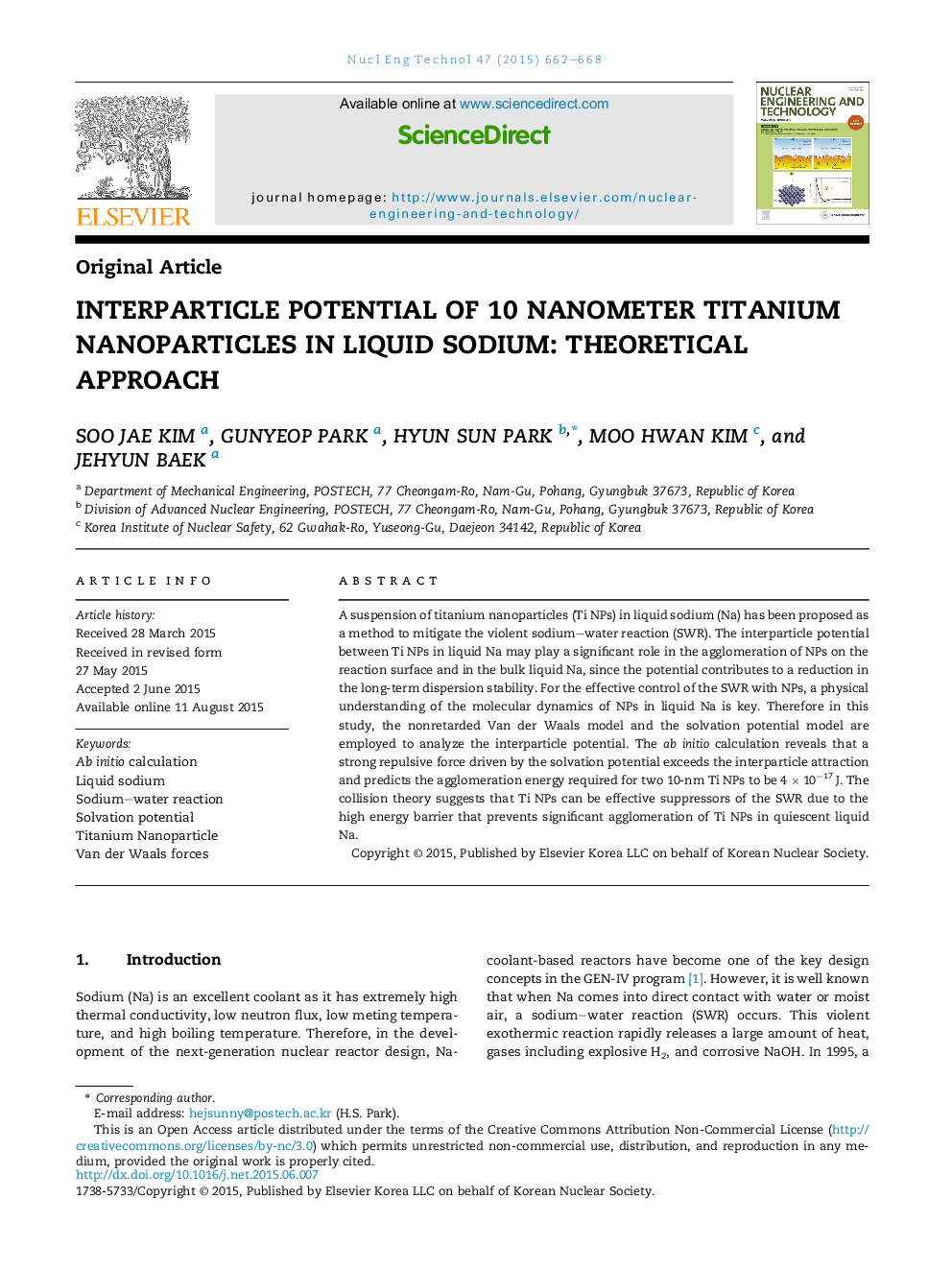| Article ID | Journal | Published Year | Pages | File Type |
|---|---|---|---|---|
| 1740111 | Nuclear Engineering and Technology | 2015 | 7 Pages |
A suspension of titanium nanoparticles (Ti NPs) in liquid sodium (Na) has been proposed as a method to mitigate the violent sodium–water reaction (SWR). The interparticle potential between Ti NPs in liquid Na may play a significant role in the agglomeration of NPs on the reaction surface and in the bulk liquid Na, since the potential contributes to a reduction in the long-term dispersion stability. For the effective control of the SWR with NPs, a physical understanding of the molecular dynamics of NPs in liquid Na is key. Therefore in this study, the nonretarded Van der Waals model and the solvation potential model are employed to analyze the interparticle potential. The ab initio calculation reveals that a strong repulsive force driven by the solvation potential exceeds the interparticle attraction and predicts the agglomeration energy required for two 10-nm Ti NPs to be 4 × 10−17 J. The collision theory suggests that Ti NPs can be effective suppressors of the SWR due to the high energy barrier that prevents significant agglomeration of Ti NPs in quiescent liquid Na.
